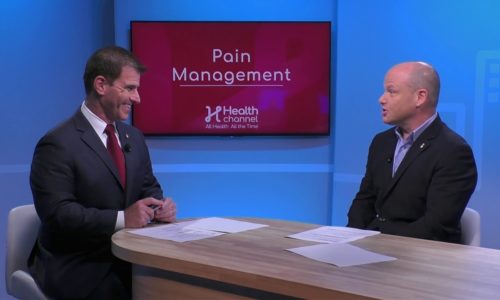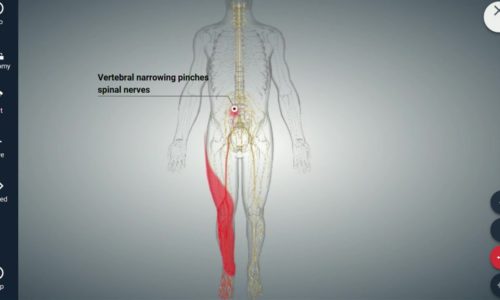Anatomy of Spinal Fractures |
With a graphic, Dr. Jose Mena, Interventional Spine Specialist with Miami Orthopedics & Sports Medicine Institute, describes anatomy of the spine.
He says there are three regions: cervical spine, thoracic spine and lumbar spine. One of them has his own purpose, the doctor explains.
When a fracture occurs, patients have a lot of pain immediately. However, some fractures can be completely asymptomatic.
Transcript
We have a graphic of the spine to explain to us what the different regions are and in which regions do you often find the fractures all right so we have that will be the spine looking from the side view here so basically we have the cervical spine which is the neck normally that’s compromised from server vertebras we have the thoracic spine which is the the next segment which basically will be the 12 bird of us and then then we have the lumbar spine which are five vertebras so basically all the regions they have their own purpose normally we have a curvature what we call the lower doses in the cervical spine and lower doses and a lot more spine in between we have the chi falls in a thoracic spine so normally the area tends to occur most of the fractures normally occurs in the thoracic and upper lumbar spine we call the thorax and loss there are a lot more Junction the reason why that happens is that we have a very rigid thoracic spine and we have a very mobile lumbar spine so dolly there’s a lot of stress on those levels but being a lot of stress on those levels normally there’s more you put more more pressure on those bones and normally those pools if they they’re a little more brittle they can easily fracture themselves now what exactly happens when you have a fracture normally when you have a fracture the patient normally they have a lot of pain immediately for the most part some fractures can be completely asymptomatic people they were not aware that they had a fracture until by some reason they had get a chest x-ray or we get our an x-ray of the spine that we’re seeing in cleaning and there’s a fracture but for the most part some patients they do feel the fracture normally the pain is all of a sudden sometimes might be what we call super OSA so there is no there’s no inciting event so they might be sitting down and all sudden they got back pain something there might be a trauma they slip and fall and obviously right there’s a reason for for the pelvic fracture so patient has an acute onset of back pain normally in there are literally population normally it’s extra excruciating they cannot move around in certain positions and then they can develop normally they start looking seeking care for for this you








